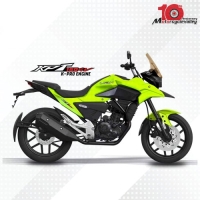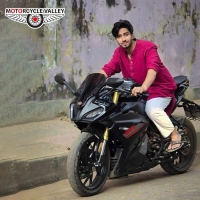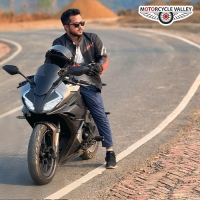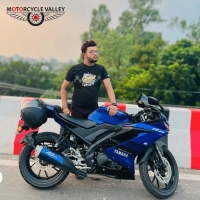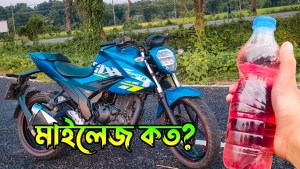History of Bajaj Pulsar
History of Bajaj Pulsar
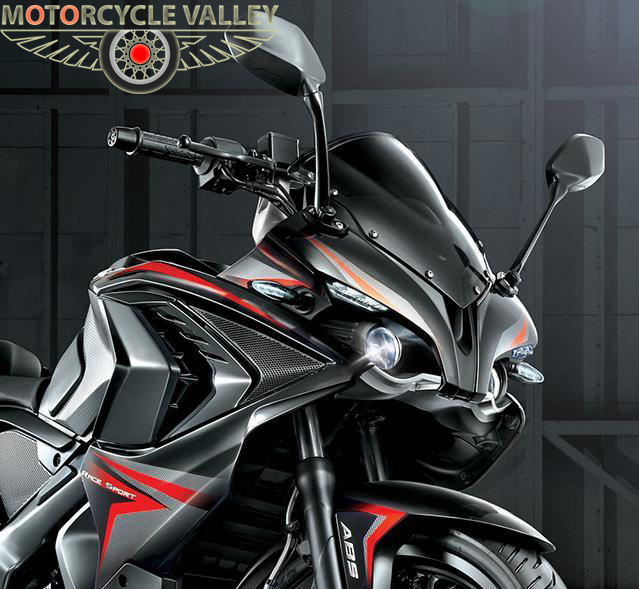
Bajaj is one of the Biggest and Heroic name in Indian motorcycle world. Bajaj was mainly excelled for Scooter manufacturing. In a joint venture with Italian Vespa Company they endowed many popular models. At the starting of 90’s popularity of motorcycles began to increase. At that time Hero Honda already set their position very strongly. Become conscious about the risk Bajaj get combined with Kawasaki before 90. Bajaj KB 100 RTZ and Kawasaki Bajaj 4S Champion become very popular at that time. Before the end of 90’s Bajaj launched the first 100cc four stoke motorcycle named Bajaj BYK 100 without the help of Kawasaki. Responses of that bike were horrific from the buyers and people started to say Bajaj is nothing without Kawasaki.
On that time in 2001 Bajaj Pulsar was born. After being launched within no time Bajaj Pulsar holds the super star title on its collar. Pulsar was not only a special performed bike, alongside that it was precocious for the features and technology. This bike was one step ahead from the Indian manufacturer’s ability though it was manufactured in India. Stopping the mouth of critics Bajaj proved that they can also be a pole star. Here I will request to give attention to the these two words “pole star” because when we will discuss about Pulsar readers will see, how much Pulsar opened the anticipation door for the “Home made India” bikes in Indian bike industry. On that time many features were being used in Pulsar which was far away from the “Home made India” motorbikes. Later than “Home Made India” bikes was forced to start marching at the same path of Bajaj Pulsar.
From 2001 to 2016 within these sixteen years there are no major chances at the main model but Bajaj gifted different models with different engines. And by their popularity it is proved that these bikes are never less in any side from the other competitor bikes from different brands. Actually Bajaj Pulsar has become living legend. If history been written after 100 years in India, Bajaj Pulsar will be at the top.
It cannot be ignored that Bajaj pulsar is still backward from the competitor Japanese bikes. Design, engine finishing and structure of Japanese bikes are more updated but we must say after Japanese bikes if there is a name in India that is Bajaj Pulsar.
We will uphold Bajaj Pulsar’s starting to present brief history in this article, IN-SHA-ALLAH.
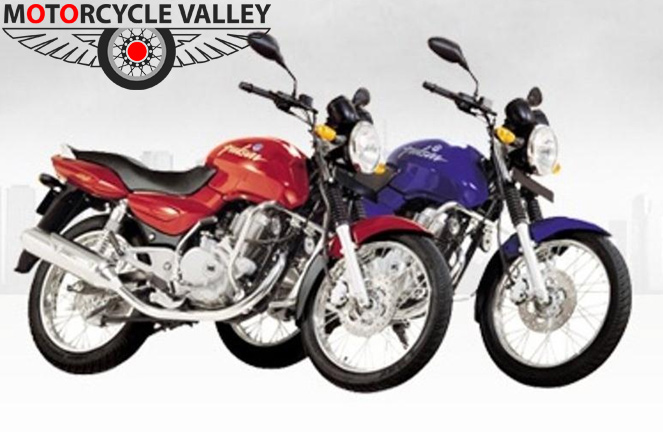
We know that Bajaj Pulsar was born in 2001. Depending on the socio-economic perspective on that time normal commuter bikes with low cc engines was existing in India. On that time extremely popular Hero Honda CBZ 150 entry level sports bike arrived. Youngsters grab that bike without any thinking. Bajaj Auto launched Bajaj Pulsar 150 on opposite. At first glance Because of the stylish design of this bike you will feel that this bike is a muscular machine. In Indian industry there was no motorcycle available with muscular look at entry level sports category along with reasonable price. No motorcycle lovers hesitates much to buy this bike. Bajaj Pulsar which was launched at 2001 contains 150cc, fore stoke, single cylinder, air cooled engine, maximum power 13 BHP. Bajaj Pulsar was the first bike in India in which Disc brakes were first used at the front tire. That moment it was like a premier future for the entry level performance bike. People supposed to watch this features at higher category motorcycles.
Other features of that bike was electric start, single tone horn, 18 liters fuel tank, classic round shape headlight, side stand indicator, techno meter and long wheelbase of 1265mm.
When Bajaj Pulsar was available in the market within few time Indian Army ordered 1500 Bajaj Pulsar 150 to Bajaj Auto. First time Indian Army ordered motorcycles from a domestic company. It was a great achievement for Bajaj Pulsar. It was like a testimonial for Bajaj pulsar which describes their capability and strength. This mark of respect gives jet fuel at the Pulsars engine. Design of Bajaj Pulsar pleased all but because of Bajaj’s own reputation uncertainty remains in peoples mind. After being detached from Kawasaki BTK100 motorcycle from Bajaj was a great disaster. Bajaj didn’t make the mistake again; they kept the design and engine quality world standard. They took help from research and Development Company placed in Tokyo for the engine of Pulsar. For this reason Pulsar is not only muscular at the looks but the engine was very durable and trust worthy.
After the large number of popularity after few months more powerful version of Bajaj Pulsar 180 was introduced. It was the same as Pulsar 150 at the outlooks. There were no cosmetic changes made by Bajaj for the 180cc Pulsar. Maximum power output of this bike was 15 BHP. At the feature this bike contained electric starter and Duel tone horn. Except these two it was same as Pulsar 150. Both bikes hold five speed gear box.
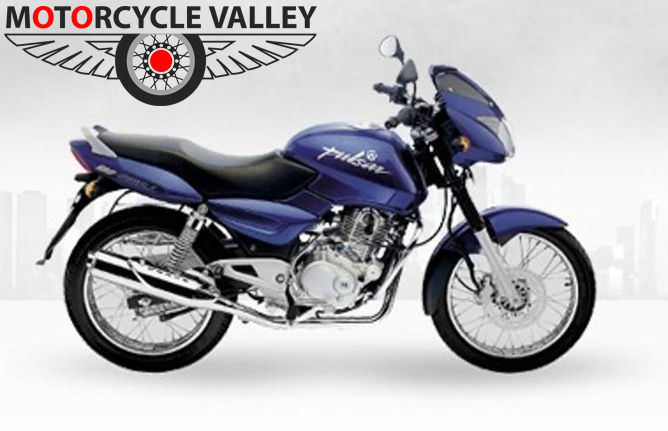
After the Arrival of Bajaj Pulsar 150 and Pulsar 180 at the year 2001 these models are upgraded at 2003. Both cosmetic and mechanical changes were made at these two models. If we talk about the cosmetic changes then we can see new model holds outstanding bikini framing headlights instead of round shape headlights. At the two sides of head lamp unit two pilot lamps were included and these changes are still found at Bajaj 150. Wheel base of both bikes were changed. Previous wheel base was 1265mm and new model contains 1320mm. Total weight of both bikes were increased because of wheelbase change and better stability. At past only Bajaj 180 holds twin tone horn but this feature is also added at Bajaj Pulsar 150. For the first time trip meter was included at the both bikes. Let us see the internal changes which were prepared at these two bikes. Pulsar 150 DTS-i had the same engine of four stoke, single cylinder, air cooled 150cc but the max power output was increased and it became 14 BHP. At the new model the biggest change was the popular technology of Digital Twin Spark Ignition (DTS-i).
Though this technology is used in other popular motorcycle of other repeated companies but it was the first time in India. For this reason instead of one spark plug new model of pulsar has two spark plugs and because of this reason engine performance and work power of the engine hugely increased. Like Pulsar 150 Bajaj Pulsar 180 DTS-I also contains 180cc four stoke, single cylinder air cooled engine but the output was increased and from 15 BHP it became to 16 BHP. This motorcycle also contains the same technology of DTS-i like Bajaj Pulsar 150.
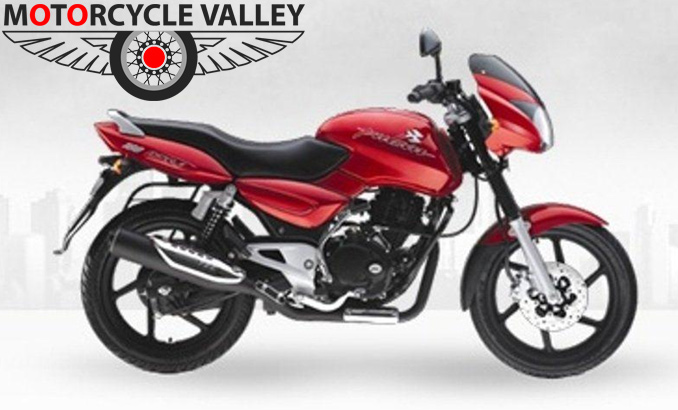
After two years again few modifications were done in Pulsar at 2005. In the main time both models of Pulsar were at the top of the popularity list. Main reason for the changes was to make Pulsar more powerful and speedy. Like before few cosmetics and mechanical changes are made. At the cosmetics changes 17 inch alloy wheels were added. Pulsar was the second bike after Hero Honda Karizma which contains alloy wheels. Though this feature was standard feature at Pulsar 180 DTS-i but it is optional at Pulsar 150 DTS-i. For the first time Gas charged hydraulic coil springs suspensions were added to both bikes. Most interesting thing is Pulsar is the first bike in India which contains this feature.
Both new versions of Bajaj Pulsar had some dimensional changes, such as fuel tanker reduced into 15 liters from 18, 12mm height of both bikes were also condensed. For the first time it was possible to identify the differences between Pulsar 150 DTS-I and Pulsar 180 DTS-I from long distance. There was no special reason just the engine and alloy rim color of Pulsar 180 DTS-I changed into black from grey. On the other side Pulsar 150 DTS-I engine color remains the same.
No big changes were made with the engine of Pulsar 150 DTS-I and Pulsar 180 DTS-I but max power of both bikes were increased. Power output of Pulsar 150 DTS-I become 13.5 BHP from 13 BHP and power output of Pulsar 180 DTS-I become 16.5 BHP from 16.
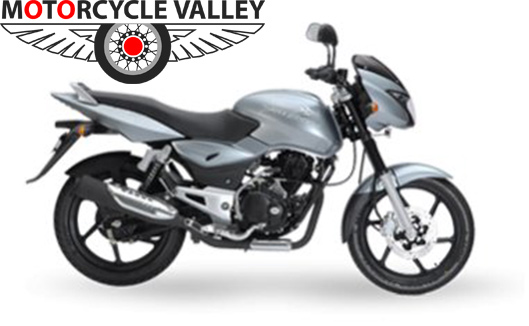
After only one year Bajaj again updated Pulsar. This time huge cosmetics changes were done at Pulsar. After creating Bajaj Pulsar for the first time Bajaj tried to give a new look. No changes at the engine were done, only altering the exterior styling Bajaj made this model larger and more aggressive.
Front face of both bike were re-designed. Pilot lamps at the headlamp unit were made more attractive and Bajaj named the lamp unit ‘wolf eyed headlamp’. At both front and rear side ‘back-lit switchgear’ and ‘clear lens turn indicators’ were placed for the placed time. For ‘Back-lit switchgear’ indicator switch of Pulsar started to glow at night. For the performance bike it is very important feature. Like side indicator built-in self canceling feature was also added and for this reason after turning when the handle will be straight again indicators will automatically turned off.
Fuel tank, front fender (mud gourd) and the side body cowl remains the same but the back side of this bike totally got a new look. As an alternative of Pointier long tailpiece more eye-catching LED tail Lamps were positioned. Pulsar is the first bike in which Led tail lamps were firs used. Rear fender was redecorated and an extra fender was added. Similar to Bajaj Pulsar 180 alloy wheels were included to Pulsar 150 and it was not an optional feature any more.
Acute changes at the rider cockpit were done at both bikes. Latest digital meter panel was placed as the replacement for analogue instrumental consol panel at the both bikes. The funny thing is Bajaj Pulsar 150 and 180 again was the first Indian bike which holds Digital display speedometer, odometer and trip meter. This model of Pulsar also holds first gear shift light and analogue techno meter.
Based on the demand of customers, Bajaj Increased torque availability on lower RMPS bikes after the arrival of upgraded version in 2005. Without these few changes at the engine and gear shift quality made both bikes more attractive to the users.
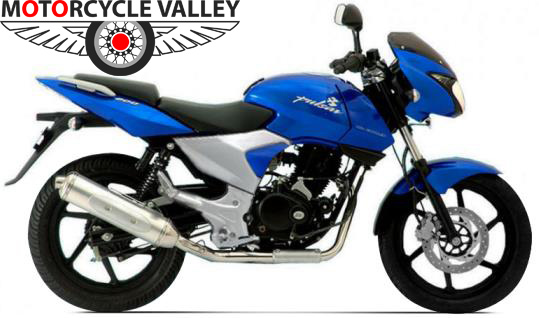
At the year 2007 Bajaj made their mind to take Bajaj Pulsar higher at the performance bike segment. For the first time they introduced Bajaj Pulsar 200 DTS-i at the local market. On that time at naked motorcycle segment (Standards, also called naked bikes or roadsters,) Pulsar 200 DTS-i was the first production. Pulsar 200 DTS-i contains the same body panel of Pulsar 180 DTS-i. For this reason Headlamp design, fuel tank, side design and the back body panel are similar to the younger brother Pulsar 180 DTS-i. Ultimately the main structure remains the same. Bajaj does made small cosmetic changes to separate these two brothers. Such as smart tank shrouds, split seats, clip-on handlebars and split pillion grab rails. We had seen Bajaj was always the ideal of all Indian bike manufacturers because of their latest features and design. Few features were discovered by Bajaj and after their production other manufacturers also used that feature or technology to their own products. This time they again did the same thing and whenever they brings new model users were curious to know about the new features which were added. For an example for the first time tubeless tires were added at Pulsar 200 DTS-i and it was wider than Pulsar 180 DTS-i. Rear tire was 120/80 x 17 in size and for this it made the visual charm more aggressive and powerful. Inside the cover there were big changes. Maximum output of fore stoke single cylinder engine was 18 BHP. For the cooling of the engine air cool technology was used. This technology was first used in Indian bikes history.
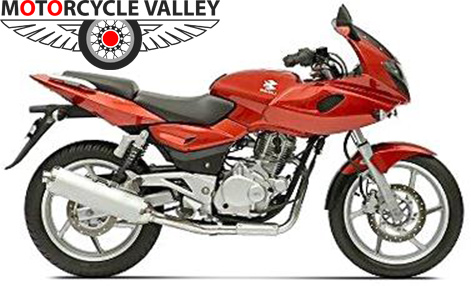
Because of few restrictions Bajaj Pulsar 200 DTS-i was not that much popular as other Pulsars. Pulsar has reached at the extreme level and for this reason Pulsar lovers cannot tolerate any kind of deficiency in it. For this reason Bajaj Auto introduced the upgrade version of Pulsar 200 and they named it Pulsar 220 DTS-Fi. It was the most powerful motorcycle from Bajaj among all. After the production of this bike it creates a new era and it took Pulsar series to an intense level. This bike was better than Pulsar 200 DTS-i because of its visual Appeal and power. Along with that other Pulsar motorcycles was naked version but Pulsar 220 DTS-i-FI was semi-faired motorcycle. Besides semi-fairing previous features and new cosmetic changes were done at Pulsar 220 DST-i-Fi and this combination becomes idyllic for the new “made in India” motorcycles. Among those features Projector headlamp, rear disc brake and fairing mounted mirrors was first used in any Indian motorcycle. Body panel was similar to Pulsar 200 DTS-I which means Pulsar 220 DTSI-Fi also contains split pillion grab rails, split seats and clip-on handlebar. Bajaj made the Digital instrument consol panel more up to date and smart, they added engine temperature, engine oil level and battery indicator.
The engine was 220cc fore stroke, single cylinder. For the first time as the replacement of carburetor feed engine, fuel injected system engine was used in it. Maximum power output of this bike was 19.5 BHP. After study all these things about this bike hope you will understand the popularity level of Pulsar 220 DTS-Fi.
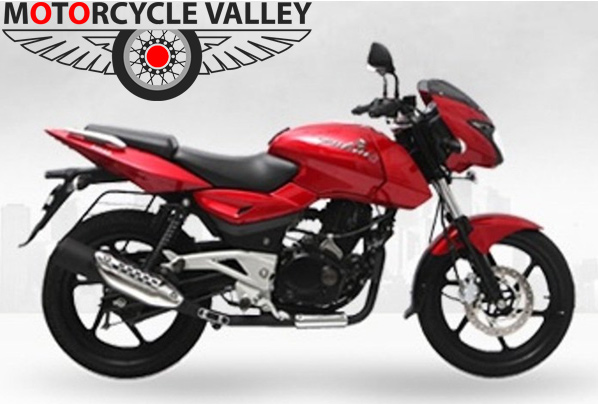
Bajaj Auto didn’t forget about their two junior members of Pulsar family. At 2009 for the fourth time few cosmetic and mechanical changes were made in Bajaj 150 and Bajaj 180. Both bikes become more good-looking and refreshing. After making the changes both bike contained, fuel tank shrouds, Back theme at engine silencer and handle bar, 3d logo at the fuel tanker and every lighting system brought under DC electric system. Other cosmetic changes was split seats, clip-on handlebars , split pillion grab rails, meatier front forks, new rear swing arm and wide rear tire. At past techno meter background of Bajaj Pulsar 180 DTS-i and the same feature was added to Pulsar 150 DTS-i.
At the mechanical side again only the output power was changed. Pulsar 150 DTS-i got 14 BHP and Pulsar 180 DTS-i got 17 BHP max power.
After upgrading these two models of Pulsar series Bajaj Auto closed production of their slow selling product Bajaj Pulsar 200 DTS-i.
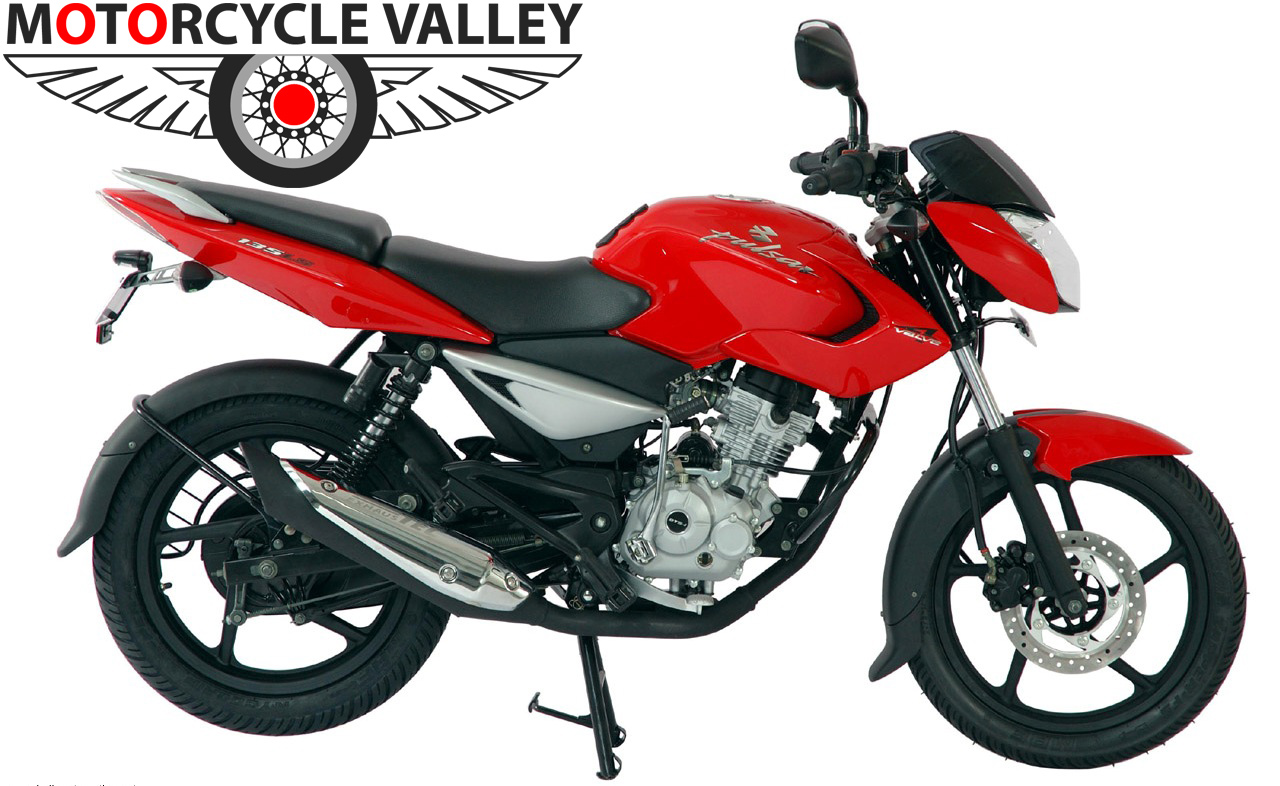
At the year 2009, Bajaj auto reduced the engine power and by doing huge cosmetic changes they introduced their new member Pulsar 135 LS of their Bajaj family. After this new creation Bajaj enlarged their kingdom at the commuter segment along with performance segment. Like before Bajaj Again used some latest technology in this bike which was earliest use in any Indian bike. Though Bajaj Pulsar135 LS was not good enough as Pulsar 150 but because of the same origin this bike was full of power. This bike was totally made with different design from the trade mark design of Pulsar 150. This bike was slimmer than other Pulsar and it’s not similar as the other commuter category bikes. New Headlamp, pointy shrouds at both sides of the fuel tank, split pillion grab rail, clip on handle bar, Split seat, part digital instrumental consol, Aluminum number plate holder, LED tail lamp and rear tire hugger are the new added features of this innovative model of pulsar.
Pulsar 135 LS holds 135cc four strokes, single cylinder engine. Maximum power output was 13.5 BHP. For the first time Bajaj used four Valves at the engine instead of two and this change was also made first time in Indian bike manufacturing history.
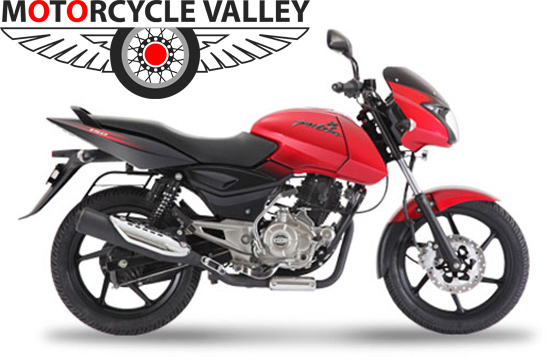
Bajaj made slight changes at UG-4 Pulsar 150 DTS-I and bring in Pulsar 150 DTS-i UG-4.5 version at 2010. No major changes were made by Bajaj for Pulsar 150 DTS-i UG-4.5 version. They completed their cosmetic changes by adding Clip on handle bar. On the other hand at the mechanical side they increased the engine power and it became 15 BHP from 14. Engine remains the same 150cc four stokes, single cylinder, sir cooled.
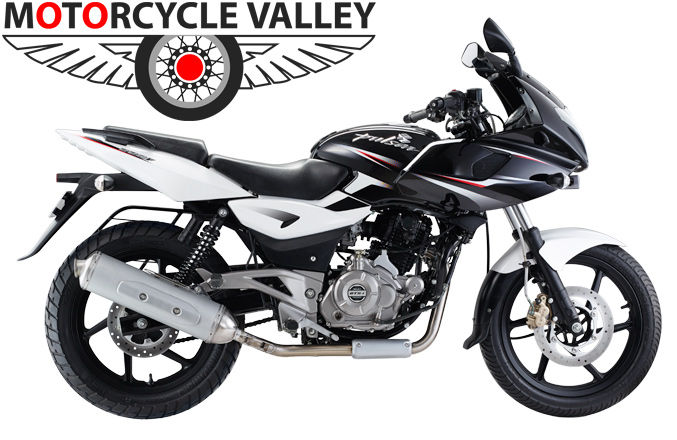
At the year 2010 Bajaj made changes at their semi-faired Pulsar 220. For more easy use Bajaj replaced the Costly fuel injected engine and used normal carburetor engine. After making this change Bajaj named this bike Pulsar 220F DTS-i. Other changes was Black color Clip on handle bar and F level mark at the faring side. Few new features were added to this bike which was first seen at Home Made Indian bikes and that was the using big carburetor. Without this few changes at the engine were made and for this reason engine output becomes more powerful. Maximum power output of this bike was 21 BHP after the modification and for this it can give 140KM/H top speed. For the top speed of this bike Bajaj Pulsar 220 earns the “Fastest bike in India” title.
Bajaj also brings the naked version of Bajaj Pulsar 220F and named it Pulsar 220S DTS-i (‘S’ means ‘street fighter’) and there were no Mechanical changes. Pulsar 220F DTS-i and Pulsar 220S DTS-i contains the same engine. At the cosmetic side instead of Semi-faring and Projector lamp Bajaj includes Bikini-faring and Halogen lamp.
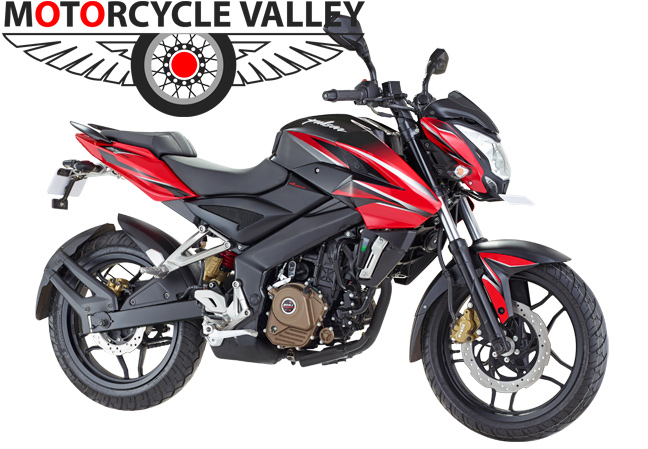
Two years rest and then come 2012 and new family member of Bajaj family was introduced as Pulsar 200 NS. With the visual appeal of street fighter this new family member of Bajaj was different from others from the features and design.
This bike holds very aggressive outlook. According to the feature and design it was like trump card of Bajaj Family. Triple spark Plug (for the first time in Pulsar), six gear box, liquid cool, four engine valves, wide tires, petal disc brakes, Mono shock suspension and many more features were added. Big difference at the consol panel was also done and for this reason overall design of Pulsar was changed with Pulsar200NS.
200cc Four stoke, single cylinder, liquid cool engine placed at Pulsar 200NS. Output of this bike was 23.5 BHP and it was the most powerful bike at the Pulsar series. Bringing this bike at the market one member of Bajaj family was expired, which was Pulsar 200S DTS-i.
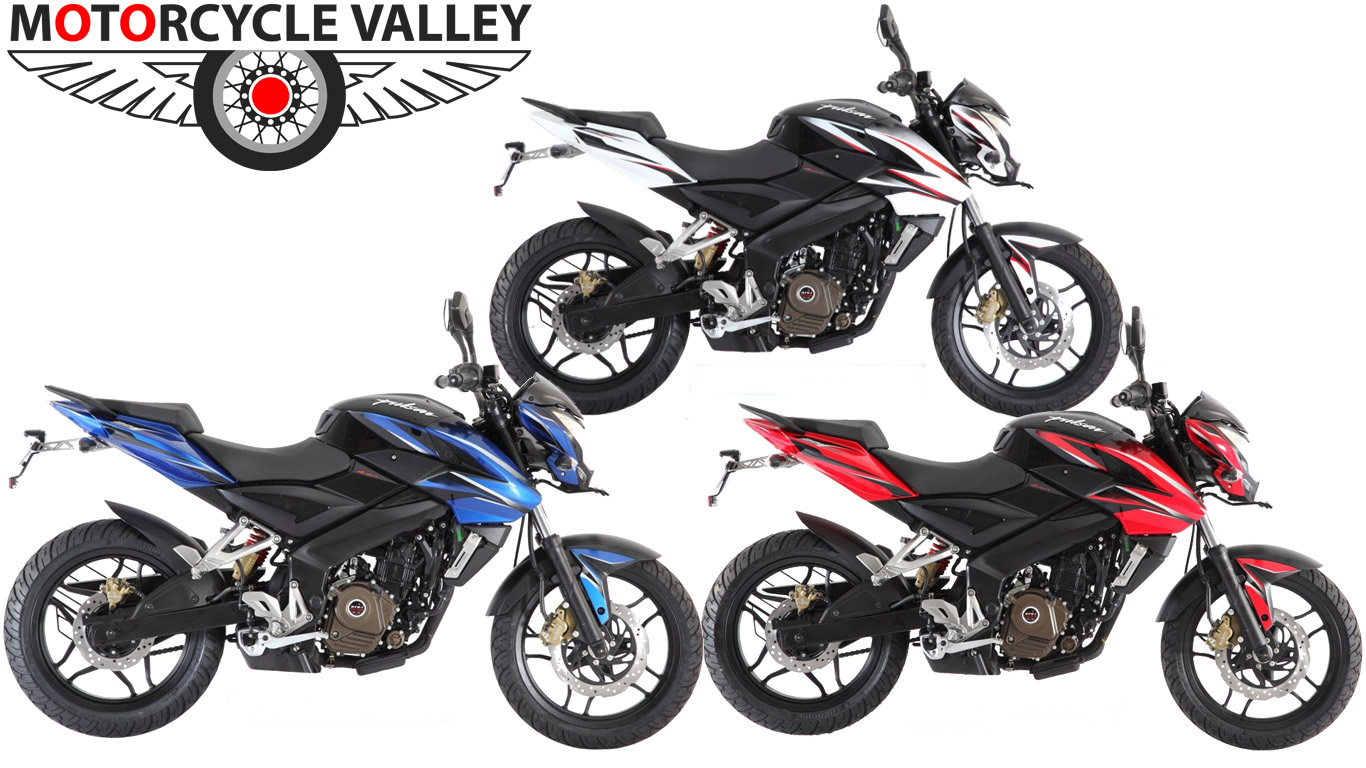
2013 was the festival year for Pulsar family. Every Pulsar model was painted with dual tone color. Pulsar 135 LS, Pulsar 150 DTS-i, Pulsar 180 DTS-i, Pulsar 220F DTS-i and Pulsar 200NS all were painted with new colors. Few people believed that Bajaj did this for covering the old Pulsar models named Pulsar 150 DTS-I and Pulsar 180 DTS-i.
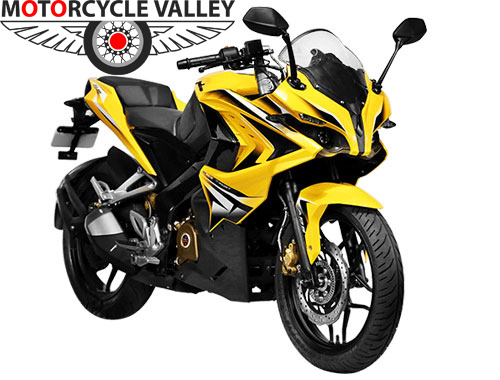
At the year 2015 like Yamaha, Honda and KTM brands other big named motorcycle manufacturers already becomes the competitor of Bajaj Pulsar.
With gorgeous and superior design this motorcycle was the first member of Bajaj Pulsar which was fully faired. Though Pulsar NS200 was the platform of this bike but at the design and features both was dissimilar. New added features of this bike were full faired, fuel injection, twin projector headlamp, LED turn indicators and optional ABS braking system.
200cc four stoke, single cylinders, liquid cool engine same as Pulsar 200NS but engine power and was increased and fuel injection was added. Maximum power output of this bike was 24.5 BHP and NS200 contained 23.5 BHP. With this type of power it becomes the most powerful bike of Bajaj family.
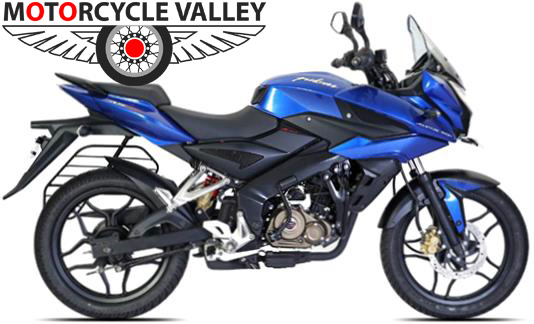
Bajaj didn’t stop with Pulsar RS200 at the performance segment but to compete with the other manufacturers they brings twin brothers in Bajaj family and named them Pulsar AS150 and Pulsar AS200. Pulsar AS200 was the semi-faired version of Pulsar 200NS. On the other side Pulsar AS150 was the carbon copy of AS200. There valuable features were Projector Headlamp, high mounted wind screen, perimeter frame and different quality rear fender. At Bajaj Pulsar AS150 few changes like low engine power, no rear disc brakes like AS200 and thinner tire was placed.
At the engine Pulsar AS200 holds 200cc four stoke, single cylinder liquid cooled engine which is similar with Pulsar 200NS. Maximum output was 23.5 BHP. Other side Pulsar AS150 contained four stoke, single cylinder liquid cooled 150cc engine and output of this engine was 17 BHP.
Finally
Does the production of Pulsar be stopped? Editor panel; of motorcycle doesn’t think so. After establishment and endurance it is quiet impossible to clear up its existence. Pulsar has become living Legend at the Indian motorcycle market. We had seen ups and downs of Pulsar, few models were rejected, few were modified with new features and latest technology and few new models were also introduced to stop the mouth of critics. As the results those models were able to make an impact on the users. Pulsar CS400 (prototype), new edition of Bajaj was put on show at 2014 in Delhi Auto Expo. It was designed with the core theme of Pulsar NS200. At 2017 Bajaj auto changed the name of this bike and named it “Domianar 400” and with that they steeped into 400cc segment. As we know this muscular motorcycle is build with the platform of Bajaj Pulsar NS200, so it can compete with any other internationally recognized motorcycles like KTM, BMW, and Honda etc. Through this Bajaj enlarge their production more dominant stage.
It is quiet impossible to discuss about Indian motorcycle market without Bajaj Pulsar.
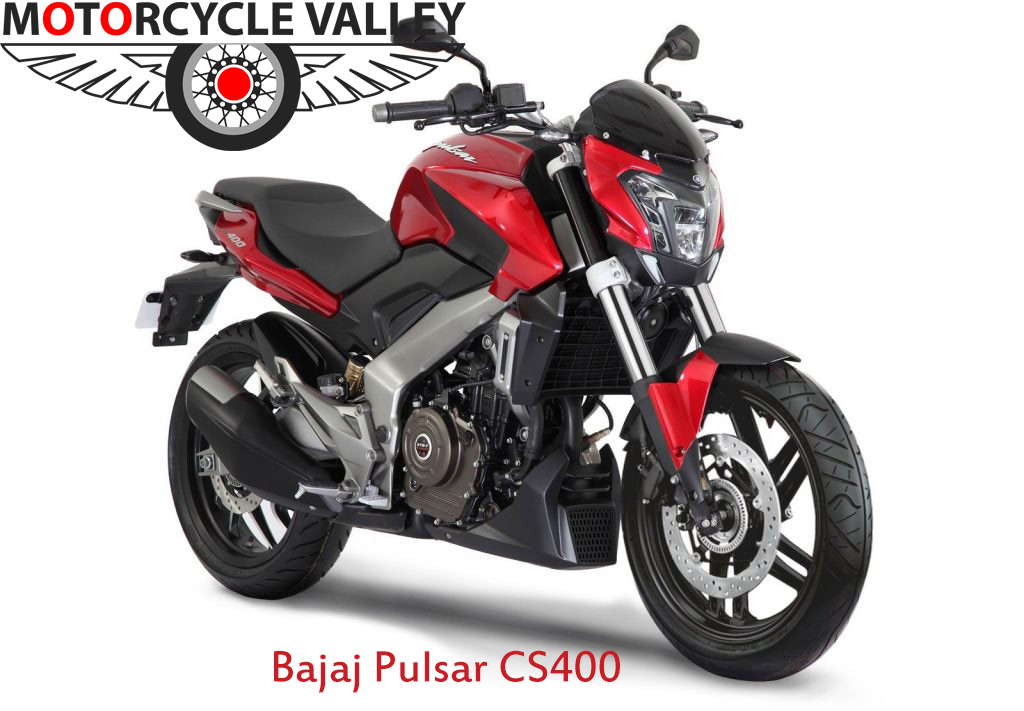
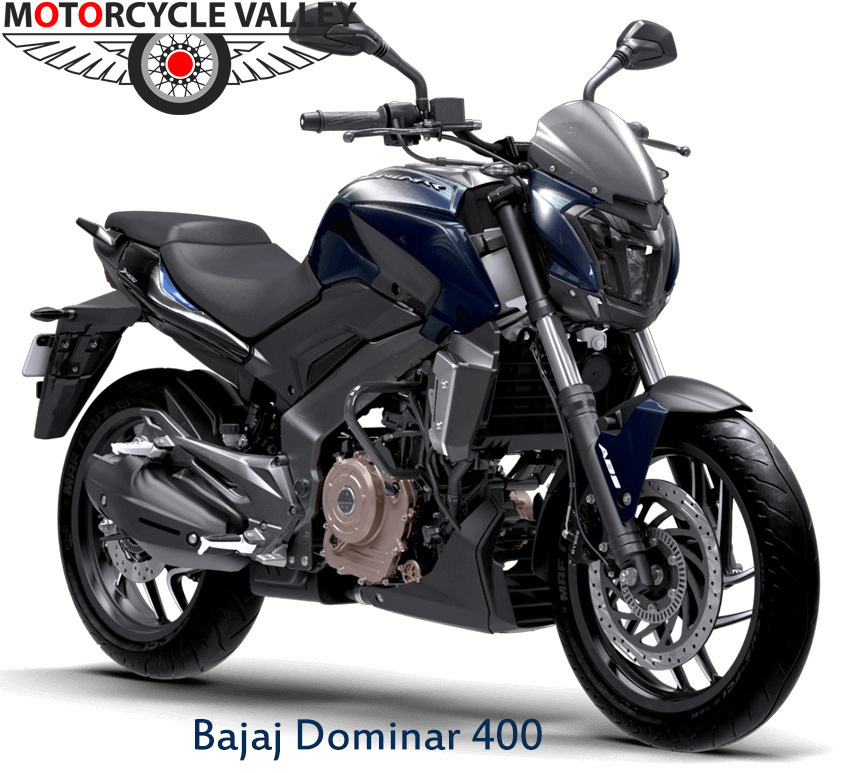
Bike News

Among the foreign brands in Bangladesh, the Thai motorcycle brand GPX has earned a great reputation even for ordinary bikers w...
English Bangla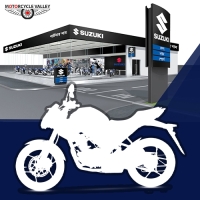
Suzuki is one of Japan's most recognizable motorbike brands renowned for its capable, performance-tuned, and stylish two-wheel...
English Bangla
Yamaha has organized a test ride of Yamaha's only higher cc bike Yamaha FZ25 in Bangladesh, where not only Yamaha bike users but...
English Bangla
Lifan is a very well-known bike brand in the biker community in the motorcycle market of Bangladesh and one of the reasons beh...
English Bangla
Yamaha has launched its high-cc bike, the Yamaha FZ 25, in the Bangladeshi market, creating quite a buzz among motorcycle enth...
English Bangla






